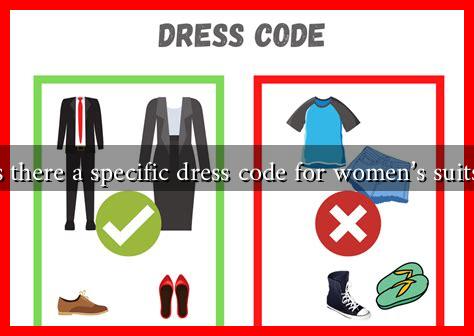-
Table of Contents
Is There a Specific Dress Code for Women’s Suits?
In the world of professional attire, women’s suits have become a staple for many women in the workforce. However, the question remains: is there a specific dress code for women’s suits? This article delves into the nuances of women’s suits, exploring the various styles, occasions, and guidelines that define appropriate dress codes in different professional settings.
The Evolution of Women’s Suits
Historically, women’s suits have undergone significant transformations. Initially, they were designed to mimic men’s suits, reflecting a time when women were just beginning to enter the workforce in larger numbers. Today, women’s suits are celebrated for their diversity in style, fit, and fabric. The modern woman’s suit can range from tailored blazers and trousers to chic skirts and dresses, allowing for personal expression while maintaining professionalism.
Understanding Dress Codes
Before diving into the specifics of women’s suits, it’s essential to understand the various dress codes that exist in professional environments. Here are some common dress codes:
- Business Formal: This is the most conservative dress code, often required in corporate settings. Women’s suits in this category typically include tailored blazers, dress pants or skirts, and formal blouses.
- Business Casual: This dress code allows for more flexibility. Women can opt for blazers paired with smart-casual tops and trousers or skirts that are less formal than traditional business attire.
- Smart Casual: This is a step down from business casual, where women can wear stylish yet comfortable outfits, such as a blazer with a trendy top and tailored jeans.
- Casual: In more relaxed environments, women can wear suits made from lighter fabrics and more vibrant colors, often paired with casual footwear.
Key Elements of Women’s Suits
When selecting a women’s suit, several key elements should be considered to ensure it aligns with the intended dress code:
- Fit: A well-fitted suit enhances professionalism. Tailoring can make a significant difference, ensuring that the suit flatters the body shape.
- Fabric: The choice of fabric can dictate the formality of the suit. Wool and silk are often associated with business formal, while cotton and linen are more suitable for casual settings.
- Color: Traditional colors like black, navy, and gray are safe choices for formal environments. However, bolder colors and patterns can be appropriate in creative industries.
- Accessories: The right accessories can elevate a suit. Simple jewelry, a professional handbag, and appropriate footwear can complete the look.
Case Studies: Women’s Suits in Different Industries
To illustrate the diversity of women’s suits across various industries, consider the following examples:
- Corporate Finance: In this sector, women often wear tailored suits in dark colors, paired with conservative blouses. A study by the National Bureau of Economic Research found that women in finance who adhered to traditional dress codes were perceived as more competent.
- Creative Industries: In fields like advertising and design, women have more freedom to express their style. A vibrant, patterned suit can make a statement while still being professional.
- Legal Profession: Women in law typically opt for classic suits that convey authority. A survey by the American Bar Association indicated that 70% of female lawyers believe that dressing professionally impacts their credibility.
Conclusion
In conclusion, while there is no one-size-fits-all answer to the question of whether there is a specific dress code for women’s suits, understanding the context of the workplace is crucial. Women’s suits can vary significantly based on industry standards, company culture, and personal style. By considering factors such as fit, fabric, color, and accessories, women can navigate the complexities of professional attire with confidence. Ultimately, the key takeaway is that a well-chosen suit not only enhances professionalism but also allows for personal expression in the workplace.
For more insights on professional attire and dress codes, you can visit Forbes.

